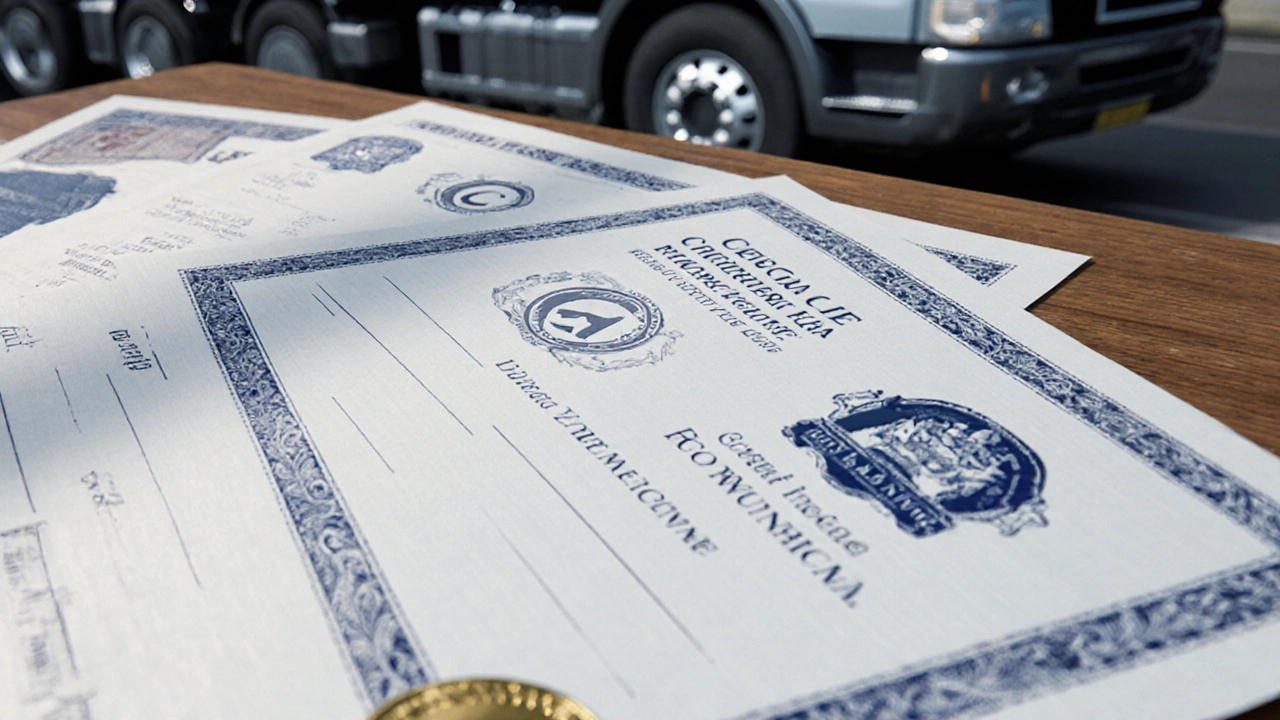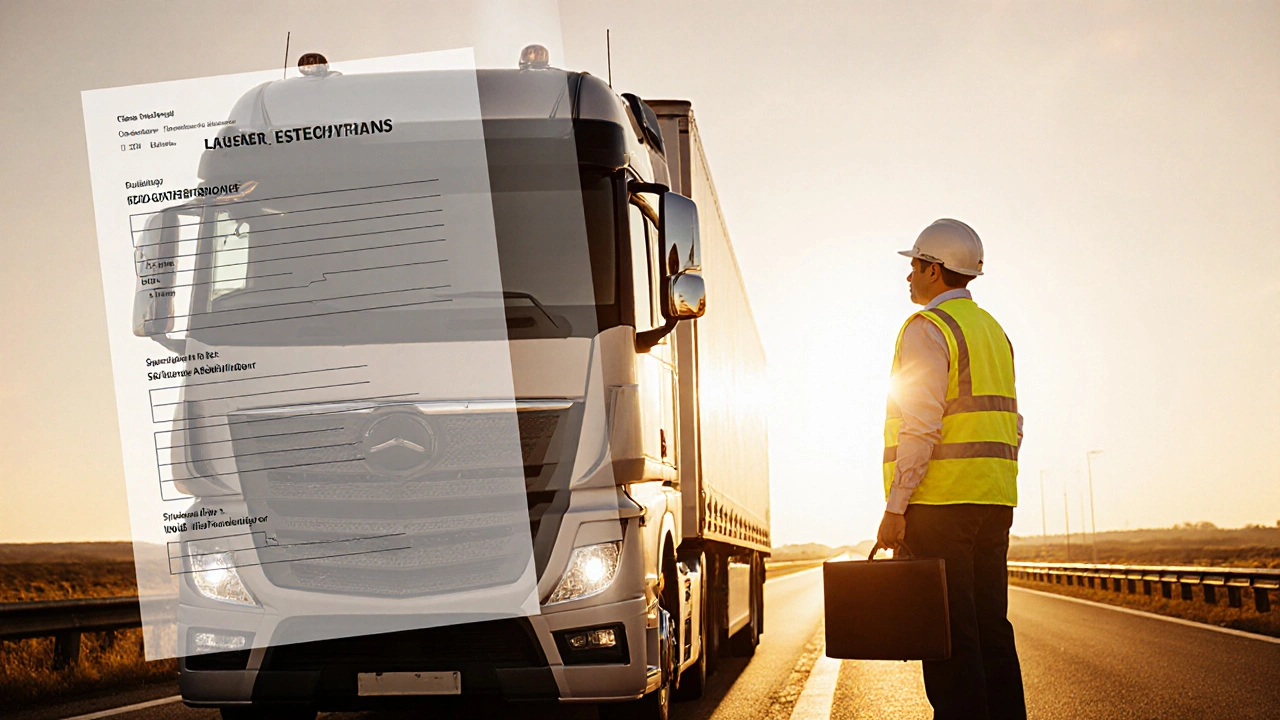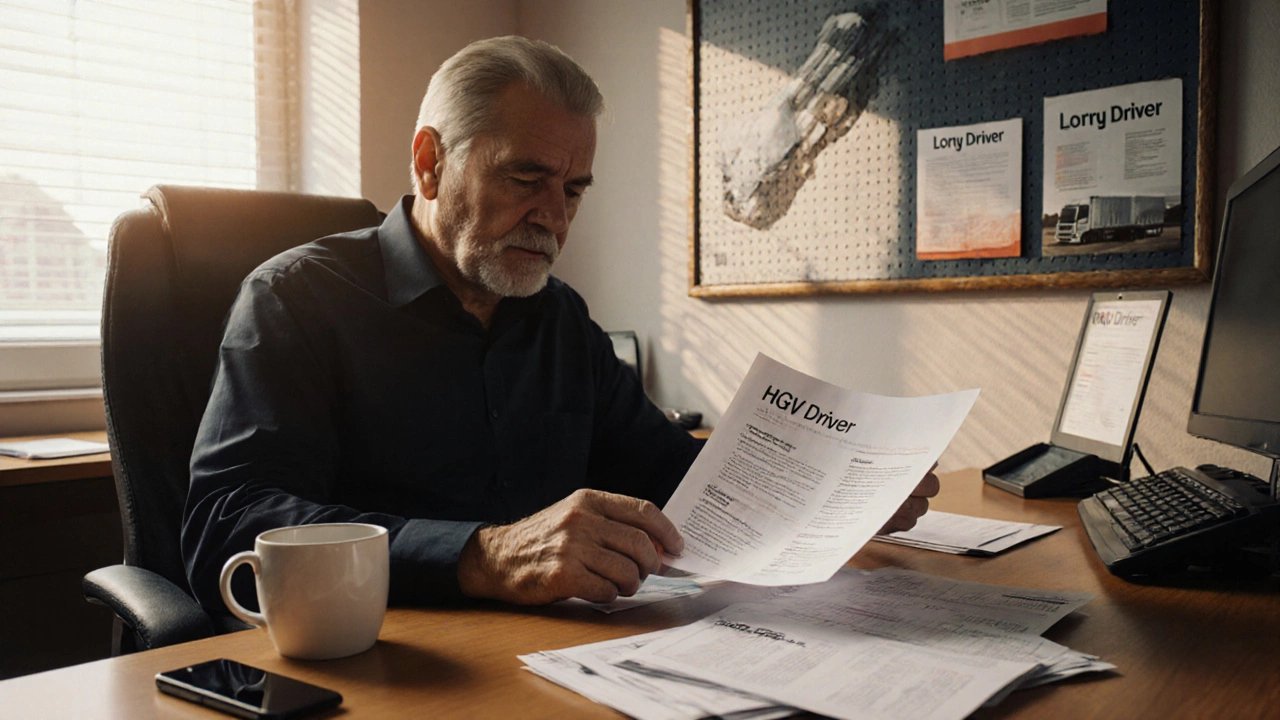Ever wondered whether you should call yourself a HGV driver title on a résumé, or if "truck driver" or "lorry driver" would sound more professional? The short answer is that the industry uses a handful of interchangeable names, but the legal paperwork and training certifications pin the role down to a specific title. This guide breaks down the exact wording, why it matters, and how to pick the right one for your career.
What "HGV" Actually Stands For
When you hear HGV (Heavy Goods Vehicle), the term refers to any motor vehicle with a gross vehicle weight (GVW) over 3.5 tonnes. In the UK, the Department for Transport (DfT) defines the class, and the DVSA enforces the rules. In everyday conversation, people swap "HGV" for "lorry" or "truck" depending on region, but the legal definition stays the same.
The Official Job Title on Paper
The formal title that appears on a driving licence, a Certificate of Professional Competence (CPC), and most employer contracts is Heavy Goods Vehicle Driver (sometimes abbreviated as HGV Driver). This is the wording the DVSA uses in its guidance documents and the one you’ll see on the “Category C” and “Category C+E” sections of a UK licence.. If you hold a Category C licence, you’re legally qualified to drive a vehicle up to 32 tonnes. Adding the E endorsement lets you haul trailers that push the total weight over 32 tonnes.
Common Alternatives and When to Use Them
- Lorry Driver is the British colloquial term for someone who operates a heavy goods vehicle, especially in local or regional haulage.
- Truck Driver is the more global term, used heavily in North America and in multinational logistics firms.
- Heavy Vehicle Operator appears on some corporate job listings where the role includes both driving and basic vehicle inspection duties.
All three map back to the same legal classification; the difference is tone and audience. When you’re applying to a UK‑based haulage company, "HGV Driver" or "Lorry Driver" feels natural. For an international logistics giant, "Truck Driver" might get you past an automated keyword filter.
Licence Categories That Define the Title
| Licence Category | Maximum GVW | Typical Vehicle | Common Job Title |
|---|---|---|---|
| Category C | Up to 32 tonnes | Rigid truck, large tipper | HGV Driver / Lorry Driver |
| Category C+E | Over 32 tonnes (tractor + trailer) | Articulated lorry, semi‑trailer | HGV Driver with trailer endorsement |
| Category B | Up to 3.5 tonnes | Car, small van | Not an HGV driver |
The titles on the right side of the table are what you’ll see on a job posting or in a CV. They all trace back to the same licence categories - the difference is purely semantic.
Why the Exact Title Matters on a CV
Recruiters often run keyword searches. If a posting asks for "HGV Driver" and you list "Truck Driver", the system might skip your application. Conversely, using "Lorry Driver" for a role that mentions "Heavy Goods Vehicle" can look sloppy. The safest approach is to list the official title first, then include the common alternatives in parentheses. Example:
Heavy Goods Vehicle (HGV) Driver - also known as Lorry Driver
This satisfies both the legal requirement and the recruiter’s keyword scan.

Getting the Title: Training and CPC
To legally claim the title, you need two things:
- Pass the Category C (or C+E) licence test which includes a multiple‑choice theory component and a practical driving assessment.
- Obtain a Certificate of Professional Competence (CPC) required for anyone driving HGVs for commercial purposes in the EU and the UK.. The CPC involves 35 hours of training, a theory test, and a case‑study assessment.
After you have both, the official documents-your licence and the CPC certificate-will list you as a "Heavy Goods Vehicle Driver".
Industry Bodies and Regulations
The Driver and Vehicle Standards Agency (DVSA) oversees testing, inspections, and compliance for HGV drivers in the UK. They publish the “Vehicle Operator Licensing” (VOL) guidelines, which define the exact wording that must appear on driver records. In the EU, the European Commission’s "Driving Licence Directive" (2006/126/EC) standardises the same titles across member states.
Frequently Confused Roles
People often mix up HGV drivers with related occupations:
- Delivery Van Driver: Usually holds a Category B licence, drives vehicles under 3.5 tonnes.
- Bus Driver: Holds a Category D licence, operates passenger vehicles, not covered by HGV regulations.
- Forklift Operator: Works inside warehouses, requires a separate forklift certification, not a road‑legal driver.
Only those with Category C (or C+E) licences and a CPC can legitimately call themselves "Heavy Goods Vehicle Drivers".
How Employers Phrase the Role
Job ads often include a short description followed by the required licence category. A typical posting might read:
Position: HGV Driver (Category C+E) - Full‑time - £28,000‑£32,000 per annum
Notice they use the abbreviation "HGV" but also spell out the licence requirement. This dual approach helps both human readers and automated parsers.

Putting It All Together: Your Personal Brand
When you craft your professional profile, think of three layers:
- Legal layer: List the exact licence categories (C, C+E) and your CPC status.
- Industry layer: Use the most common term for your market (HGV Driver, Lorry Driver, Truck Driver).
- Personal layer: Add any specialisations (hazardous materials, refrigerated goods, long‑haul).
Example CV line:
Heavy Goods Vehicle (HGV) Driver - Category C+E, CPC certified - Specialist in refrigerated transport
This format clears up any ambiguity and showcases your niche expertise at a glance.
Common Pitfalls to Avoid
- Skipping the CPC: Some employers still hire drivers without it, but you’ll be excluded from many higher‑pay roles.
- Using the wrong abbreviation: "HV" or "HGVY" are not recognised and can look unprofessional.
- Mixing licence categories: Don’t claim a Category C+E if you only have a Category C - it’s a legal issue.
Key Takeaways
- The official legal title is Heavy Goods Vehicle Driver (HGV Driver).
- Common alternatives-"Lorry Driver" and "Truck Driver"-are acceptable in informal contexts but should always be backed by the correct licence.
- Category C and C+E licences, plus a CPC, are the minimum credentials.
- List the formal title first on CVs, then include regional synonyms.
- Stay up to date with DVSA and EU regulations to keep the title valid.
Frequently Asked Questions
Do I need a CPC to call myself an HGV driver?
Yes. In the UK and the EU, any driver who operates a heavy goods vehicle for commercial purposes must hold a valid Certificate of Professional Competence. Without it, you can still hold the licence, but you cannot legally advertise the title for paid work.
Is "truck driver" the same as "HGV driver"?
Functionally, yes-both refer to someone who drives a vehicle over 3.5 tonnes. "Truck driver" is the global term, while "HGV driver" is the UK‑specific legal wording.
Can I work as an HGV driver with a Category B licence?
No. Category B covers vehicles up to 3.5 tonnes. To drive a heavy goods vehicle you must pass the Category C (or C+E) practical and theory tests.
Where does the term "lorry" fit in official documents?
"Lorry" is a colloquial British term. It does not appear in the licence categories, but many UK companies list "Lorry Driver" in job ads because it resonates with local drivers.
How often do I need to renew my HGV licence?
The licence itself is renewed every 10 years, but the CPC needs a 5‑year refresher course. Failure to complete the refresher means you lose the right to work as a professional HGV driver.

